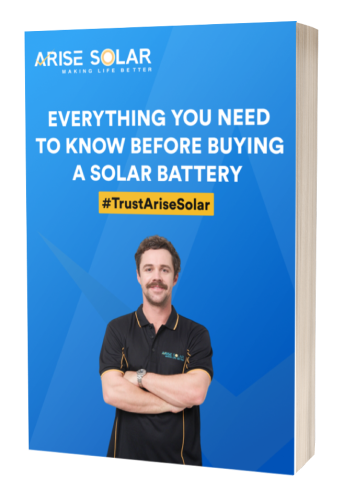The current energy crisis in Australia is already sharply raising electricity costs. This is in accordance with the rules of supply and demand, and this trend is certain to escalate. We are in this situation because of a combination of factors, including a global gas shortage, rising coal costs, obsolete coal-fired power plants, and a very gradual shift to renewable energy. Reduced maintenance and higher breakdowns of the coal power plants are the major factors driving the electricity costs up and also the flooding has impacted the coal supply. So what does this mean for the homeowners and commercials?
Up to five states were at risk of experiencing severe blackouts last week, throwing the electrical sector into a turmoil. Using renewable energy to safeguard yourself from the rising electricity bills is being recommended as one of the best alternatives by the industry experts. Solar is one of the most widely accepted renewable energy sources across our nation. Australia’s initiative to install rooftop solar panels and transition to clean energy has helped individuals to access low cost electricity and generate employment opportunities as well. However, there is still a lot more solar we need to tap in.
Australians considering adding green energy to life
As the fear has emerged since last week about the power cuts across Australia including QLD, VIC and NSW we Australians have quickly realised how important it is to switch to brighter alternatives like renewable energy to continue to enjoy the benefits of electricity and saving on bills, solar searches have increased amongst the ongoing crisis. One of the major concerns in the minds of individuals while switching to solar are:
How much rebates are available?
The Australian federal and state government offers various financial incentives on going solar which makes it financially viable to install solar in Australia. One such financial incentive is rebates offered by the government for installing a rooftop solar PV system. The solar rebate amount differs from state to state.
New South Wales
STCs (Small Scale Technology Certificates) are the part of financial incentives offered by the NSW government (The amount of STCs offered varies from one postcode to the other). Apart from that the NSW government offers solar for low income households scheme and empowering homes program. These programs help low income households switch to solar. Recently, NSW announced a $1.2 Billion investment in renewable energy. The right time to take action is NOW! The rebates are generous and the government is supporting the transition to renewable energy, helping homeowners and commercials reduce electricity bills. If you are a homeowner in NSW, on an average you can save up to $1200-$1400 per year by installing solar panels in NSW (considering average figures with standard 6.6kW system).
Queensland
Solar PV system is an attractive investment in QLD because it receives an abundance of sun. The financial incentives offered by the QLD government for installing a rooftop solar system are set aside currently, However, individuals can take advantage of the STCs (Small Scale Technology Certificates). On an average, Queensland homeowners can save up to $1000-$1100 on their electricity bills every year after solar (considering average figures with standard 6.6kW system).
South Australia
When it comes to transitioning to renewable energy and choosing brighter alternatives, South Australia is a leader across the globe. Solar is one of the widely accepted and leading sources of renewable energy in South Australia. Currently, STCs (Small Scale Technology Certificates), are available in SA to take advantage of the rebates. And there is also a home battery scheme offered by the SA government, which helps SA residents take advantage of the subsidy and install solar batteries.
Victoria
Solar Victoria’s solar homes program and battery rebates is helping Victorians pay half the cost of installing solar batteries and solar panels. You can save on your energy bills by claiming the solar rebates of up to $1400 plus an option of interest free loan of the same amount. STCs (Small Scale Technology Certificates) are also a form of rebate that are available on installation of rooftop solar. To check your eligibility for the rebate program, get in touch with one of our solar consultants and learn more.
Am I eligible for it?
The eligibility criteria are based on the state you reside in, the property specifications, homeowner’s annual income, and the value of the property, existing solar system or new solar system and there is more to it. It is recommended to seek expert advice to check your eligibility for the rebates, so that you do not miss on anything.
What about the feed in tariffs?
Feed in tariff is the credit you receive on your electricity bill after installing solar, for feeding back the extra power generated by your solar system back to the grid. The amount of cents you are entitled to receive per kW fed back to the grid, depends on your electricity retailer. Currently, on an average, 6-10 cents per kW are being offered, however, these figures vary with the retailer and state you are based in. There is always a room for negotiation with your energy provider for offering higher feed in tariff rates. Due to the energy crisis, as the electricity prices go up, the feed in tariff rates have improved and gone higher, in some parts the tariff rates have also lowered, it is the right time to take advantage of the current feed in tariffs to keep benefitting in the future.
Arise Solar chooses reliable solar brands
At Arise Solar, we make sure your solar panel system is a worthwhile investment. We offer a wide range of solar panel systems to work with your budget and ensure you’re receiving the highest quality panels, designed for maximum performance and efficiency over time. Arise Solar strives to make solar even more affordable in the times of crisis. Speak to our team and get additional discounts for installing solar.





